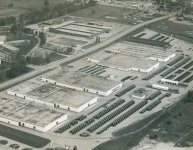FJAG
Army.ca Legend
- Reaction score
- 13,729
- Points
- 1,160
MJP said:I can't speak for how we integrated SAP/DRMIS at a high level but can say from user perspective we really cheaped out on implementation and adopted a very Phoenix like approach to training considering that the person that did the staff officer training was a Class B MS Naval Hull Tech IIRC and the course itself was almost entirely useless. My peers and I were lucky at the time that we had a boss that worked on the early stages of project and his 2IC who was a genius in SAP, so we avoided many of the issues that other areas had and rolled over and knew the system fairly well. We had to do it ourselves cause for the most part from the L4-L1 level there are only isolated pockets of folks (CA) that know what they are talking about and in the early days the CA didn't even have a dedicated team at the L1 level. That came much later and they have been a force multiplier when it comes to fixing issues but we still have a very distinct lack of knowledge at the lower end of the spectrum.
https://en.wikipedia.org/wiki/Phoenix_pay_system
In March 2014, according to an IBM spokeswoman, the Crown took over responsibility for "training design and execution" from IBM," in a cost-saving measure. The government adopted a 'train the trainer' approach rather than follow IBM's recommended system.[12]
Boy that takes me back a decade when I was project managing JAG CIMP and we were working on the business transformation aspects of the project.
Our initial rollout was for RDIMS customized for JAG. Before the software each office, directorate etc managed their own paper files (mostly badly). The RDIMS system created a central repository of paper files run by a records manager and two file clerks, a firm wide documents/records/email management system, a centralized Master File Plan and a manual on office wide records management rules and procedures. That came concurrent to a new Protected B computer system that allowed individuals to connect to their own desktop and establish a secure connection with the centralized servers in Borden from any DWAN workstation anywhere.
Within the project we estimated that we would need to roll out office by office and would need to train individuals users for the equivalent of 1 day through distant learning and 3.5 days at a classroom terminal and in addition would train a master user within each directorate and field office for an additional three days. I had long and tiresome arguments with the boss who felt very strongly that we just couldn't take people away from their day-to-day business that long and in the end we got the distant learning plus one day classroom.
You just can't do that. Learning data processing/records management tasks is about twenty percent understanding how to use the data forms and eighty percent understanding the practices and procedures as to how the data is to be managed/used. I ran into dozens of people within DND who work 8 hours a day using Word and still have no idea how to use Styles--no one ever taught them and they're "way too busy" to learn about how the more esoteric elements of how their software works.
I remember way back in the eighties going to stores just as the new supply system software came out and it was pretty much a circus as they were transferring data from cardboard clothing cards into the computer. It was pretty much a free for all and honour system for a while. I could easily see where tens of thousands of items slipped out of whatever inventory there was. Like I said: Target lost billions in Canada.
:worms:



